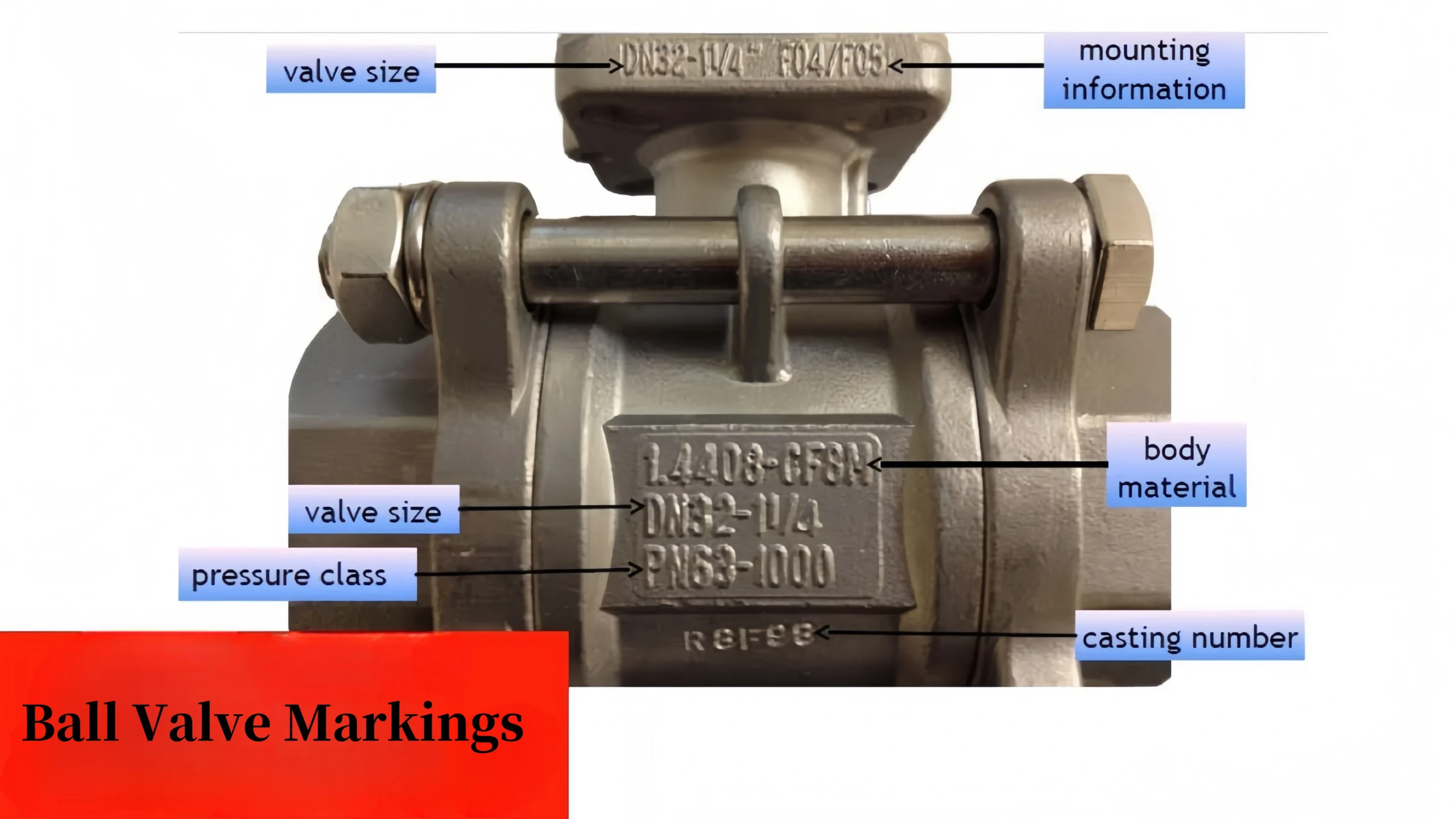When you’re selecting a valve, understanding Ball Valve Markings is critical. Markings like CWP, WOG, and WSP provide essential information about a valve’s pressure rating, material compatibility, and application suitability. Whether you’re choosing a 600 WOG valve for gas or need to understand what 150 WSP means, this guide will cover everything you need to know about ball valve markings and how they apply to different industries.
Why Are Ball Valve Markings Important?
Ball valve markings are essential because they provide critical information about the valve’s specifications, including:
- Pressure Ratings: The maximum pressure the valve can handle (e.g., 600 WOG, 150 WSP).
- Media Compatibility: Indicates whether the valve is suitable for water, oil, gas, or steam.
- Material Identification: Specifies the material used in the valve body (e.g., brass, stainless steel).
- Standard Compliance: Ensures the valve meets industry standards like ANSI or UPC.
Common Ball Valve Markings and Their Meanings
CWP (Cold Working Pressure)
CWP, or Cold Working Pressure, refers to the valve’s maximum pressure rating at temperatures between -20°F and 100°F. The maximum rating of a 600 CWP valve amounts to 600 PSI while operating within -20°F to 100°F temperature range. The valve serves many industrial requirements in HVAC systems and water treatment plants.
WOG (Water, Oil, Gas)
The WOG designation represents Water, Oil and Gas as suitable materials for the valve. A valve bearing the marking can operate with these three media types according to its listed pressure rating. A 600 WOG-rated valve operates at up to 600 PSI with capabilities for all media variations of water, oil and gas. The valve receives no ratings for steam operation.
WSP (Working Steam Pressure)
The Steam Working Pressure (SWP) designation as WSP determines the maximum steam pressure level for which this valve has been designed. A valve with marking 150 WSP enables the resistance of 150 PSI of steam pressure. Such rating information is vital because it enables proper usage in high-temperature steam applications.
Other Markings to Look For
- DN (Diameter Nominal): Indicates the valve’s nominal diameter in millimeters (e.g., DN15 for 15mm).
- PN (Pressure Nominal): Represents the valve’s pressure class in bars (e.g., PN40).
- Lead-Free (LF): Valves marked “LF” are certified as lead-free, making them safe for potable water systems.
- ANSI Standards: Ensures the valve meets American National Standards Institute requirements for safety and performance.
- UPC Certification: Indicates compliance with Uniform Plumbing Code standards.
Common Valve Applications Based on Markings
Here are some examples of how specific markings like CWP, WOG, and WSP apply to real-world applications:
- HVAC Systems: Valves with high CWP ratings are ideal for cooling and heating systems.
- Food Processing: Lead-free valves marked LF ensure safety in food-grade systems.
- Steam Systems: Valves marked 150 WSP are perfect for handling high-pressure steam.
- Oil & Gas: High-pressure WOG valves are essential for pipelines and refineries.
Comparison Table: Key Ball Valve Markings
| Marking | Meaning | Application |
|---|---|---|
| 600 WOG | Handles 600 PSI for water, oil, and gas | General industrial use |
| 150 WSP | Handles 150 PSI of steam pressure | Steam systems |
| DN15 | 15mm nominal diameter | Piping systems |
| LF | Lead-free | Potable water systems |
How to Choose the Right Ball Valve Based on Markings
When selecting a ball valve, consider the following:
- Check the CWP or WOG rating to ensure it meets your pressure requirements.
- Verify the material compatibility for your media type (e.g., water, oil, gas).
- Look for WSP ratings if you’re dealing with steam systems.
- Ensure the valve complies with standards like ANSI or ASME.
Additional Resources
For more detailed information on Ball Valve Markings, explore the following resources:
Ready to Learn More About Ball Valve Markings?
Explore our comprehensive selection of ball valves and guides to find the perfect solution for your application. Contact us today to speak with an expert!
